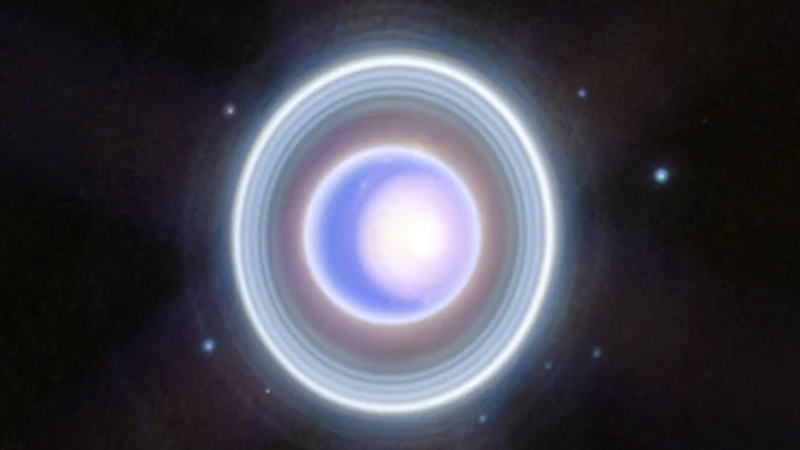In a groundbreaking revelation, experts delving into the mysteries of Uranus have stumbled upon a remarkable finding about the seventh planet in our solar system.
Published in the renowned scientific journal arXiv, their study has unveiled a startling fact: the quantity of methane gas within the ice giant is far greater than previously understood, and notably, it exists in an unexpected state, as reported by Metro UK.
Contrary to prior assumptions, Uranus doesn’t harbor methane solely in its gaseous form. Instead, scientists estimate that a mere 10% of the planet might contain a softer version of the gas.
This revelation challenges the conventional belief that Uranus predominantly consists of water and ice.
Astronomers are now embarking on a quest to unravel the enigma behind Uranus’s colossal proportions during the formation of the solar system.
In the early stages of the solar system’s evolution, scientists hypothesized that planets initially emerged from clouds and dust enveloping the sun.
As these celestial materials coalesced, they gradually morphed into distinct planetary bodies, including Uranus.
Amidst this cosmic convergence were planetesimals, ranging from small chunks to substantial celestial bodies several hundred miles in diameter.
According to the report, these mammoth objects within Uranus bear a resemblance to comets originating from the Kuiper Belt.
However, if these comets lack the necessary components to form water, the presence of abundant ice on Uranus raises perplexing questions about its origins.
Given its considerable distance from Earth, our understanding of Uranus remains limited, with only a solitary spacecraft, Voyager 2, having ventured close to it.
Nevertheless, leveraging advanced technological instruments, scientists have managed to discern thin layers of hydrogen and helium enveloping a rocky core within Uranus.
Intriguingly, nestled amidst these layers lies a reservoir of water estimated to be 50,000 times the amount found on Earth.
Through various computational models, experts have deduced that methane within Uranus likely exists in either a solid or mushy state, sandwiched between its outer hydrogen-helium layers and icy shell.
As scientists continue to probe Uranus’s mysteries, each revelation brings us closer to comprehending the complex dynamics that shaped our celestial neighborhood.











Leave a Reply